#tsuzukazu
Explore tagged Tumblr posts
Text
GRADATION OF BLUE WHEN I GET YOU
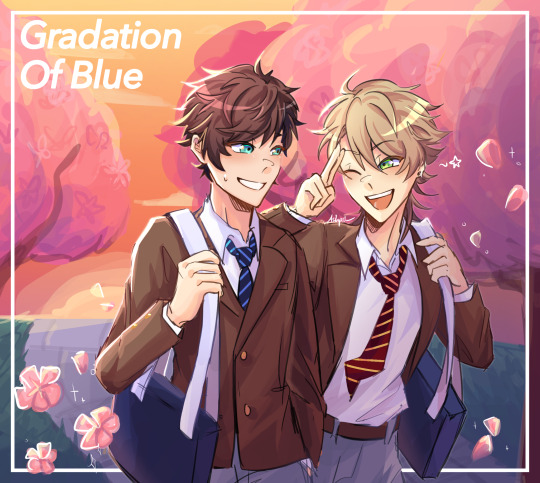
#took me 5hrs for this#but more surprisingly ???? TSKZ? FROM ME???????#i dunno tbh i’m a bug fan of the tskz where it’s non-communicated pining in hs#*BIG#and then every day that goes on they both look forward to what will bloom from the relationship……. but nothing more does#until they drift apart and when they meet again the same spark isn’t there#but the relationship is still impactful!!!!!! and it’s the type of relationship that leaves a mark#i really like that very specific flavor of tskz. aka first time in 5yrs i’ve done content for these two and probs will be a Long while#till next installment#OK ENOUGH YAPPING. tags#kazunari miyoshi#miyoshi kazunari#a3! kazunari#tsuzuru minagi#minagi tsuzuru#a3! tsuzuru#tsuzukazu#tskz#a3!#a3#a3! act addict actors#a3! art#a3! fanart#a3! game#ashipiko draws ♪
66 notes
·
View notes
Text
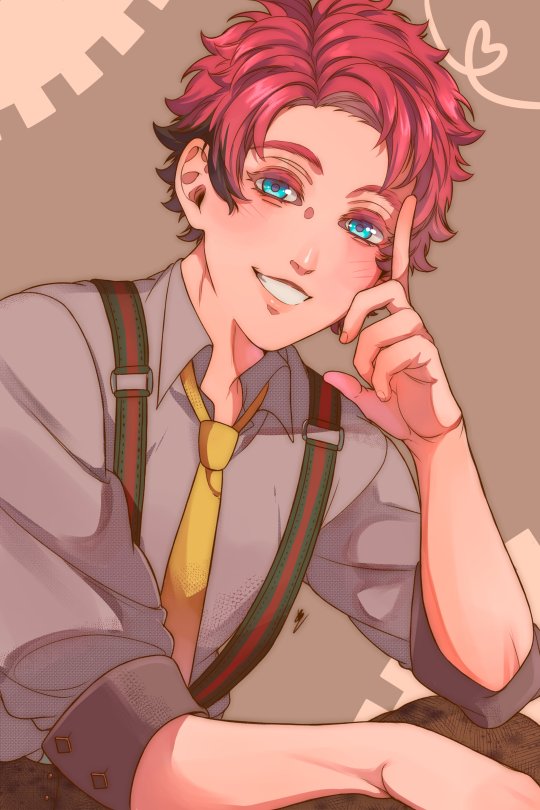





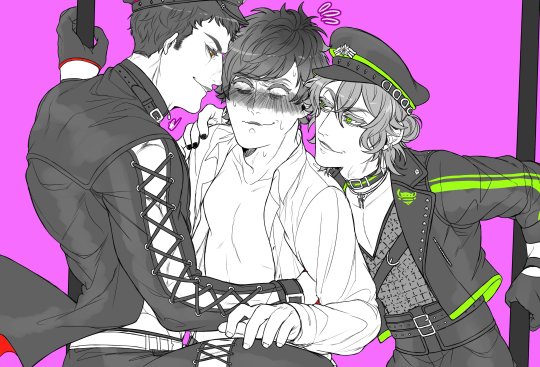
a3 log 2
#my art#a3! act addict actors#a3!#a3#act! addict! actors!#omi fushimi#taichi nanao#guy a3#guy nishiki#guytsumu#tsumuguy#tsumugi tsukioka#tachibana izumi#fushimi omi#tasuku takato#omitasu#tasutsumu#tsuzuru minagi#kazunari miyoshi#omitsuzu#tsuzukazu
47 notes
·
View notes
Text

Gradation of Blue
#max doodle#a3!#oh this is fire actually#act addict actors#tsuzukazu#tsuzuru minagi#kazunari miyoshi#gradation of blue#sobbing
21 notes
·
View notes
Text

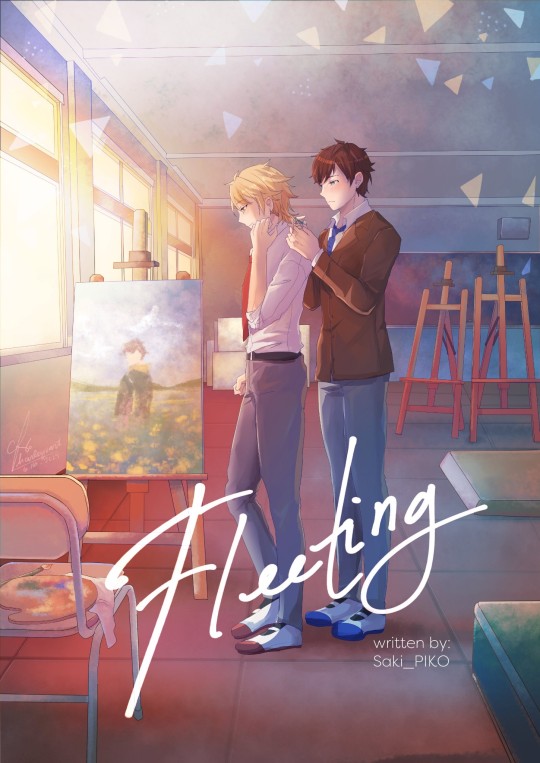


so i'm really into this tsuzukazu one-shot~ owo
fic link: archiveofourown.org/works/42508731
#harleysart#my art#a3! act! addict! actors!#a3game#comms open#digital art#tsuzukazu#tsuzuru minagi#kazunari miyoshi
35 notes
·
View notes
Text


My reaction
This new Tsuzuru card reminded me of that meme from A3! EN times, when Tsuzuru "sensualizes" like this
#a3!#a3! game#a3! act addict actors#tsuzuru minagi#kazunari miyoshi#tsuzukazu#I can't😂😂😂#i miss a3! en so much#i miss them
14 notes
·
View notes
Text
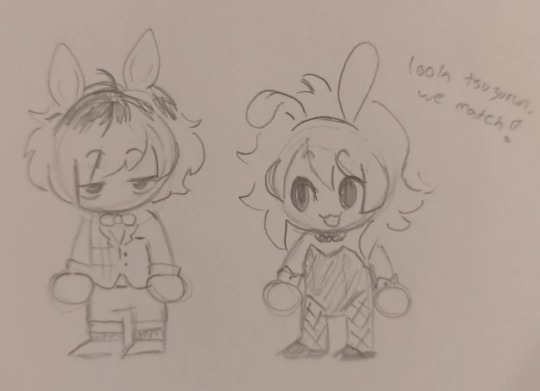
i <3 bunnyboys
#a3! act addict actors#a3!#kazunari miyoshi#tsuzuru minagi#tsuzukazu#my art#not the nurse dress i promised but an offering nonetheless#fashion saga
23 notes
·
View notes
Text
A3! | TsuzuKazu

Rating: G
Summary:
Tsuzuru's pheromones are just like his personality - lowkey. But for the first time, he's intrigued by someone else's pheromones and they seem to be able to smell him back?
cw: Omegaverse (Alpha! Tsuzuru x Omega! Kazu)
A/N: I might add to this AU later on but this is at least the first meeting they ever have lol
Ask a random person on the street what their image of an alpha is like and Tsuzuru is sure he won’t fit that description.
Alphas are known for their imposing figures and intimidating presence – neither of which Tsuzuru has. He tends to fade into the background and most people, on the contrary, find him a friendly and comforting person to be with. As a compliment, his classmate in middle school once told him he was the most beta alpha she had ever known.
Tsuzuru didn’t know if he should have taken it as such.
Well, it’s not like he’s bothered exactly. It’s just a bit annoying for people to be surprise every time he reveals it.
A large part of it is because they don’t notice his pheromones. They’re a light scent that a lot cannot perceive unless he were on high alert or super stressed. Either situation is only likely to happen at home where his siblings are often short of giving him a heart attack. And in turn, he doesn’t smell others that well either. It’ll only be if they were deliberately releasing their pheromones or they were in rut or heat.
His alpha older brothers smell others just fine, but Tsuzuru guesses his pheromones just followed his personality. He isn’t one to stand in the spotlight like Meguru or stand out in the crowd like Tadoru.
He’s just Tsuzuru. And that’s okay with him.
So it’s a huge shock when a floral scent overtakes his senses.
Without thinking (and Tsuzuru is always thinking), he follows it, ignoring the questioning calls of his classmates around him.
When he’s back in his right mind, he looks around and finds himself in an empty hallway, sans a guy sitting on the ground, grumbling out loud.
Is that smell coming from him?
“Oh, man, I messed up this one. It’s just a scrape but it might bleed all the way to the classroom! A bloody trail would be a scare for anyone!” The stranger wears a tie a different color from his. He must be an upperclassman - a second year, a really flashy looking second year with bright blond hair and earrings. Are students even allowed earrings on campus?
“This sucks! It really isn’t worth a trip to the infirmary…” The stranger sighs loudly, but then abruptly looks in Tsuzuru’s direction, making Tsuzuru jump in surprise.
“…Dandelions?”
Their eyes meet. What the heck? Can that guy…feel his pheromones? They’re about a few meters away from each other too. In the past, his peers had to purposely sniff him to get a whiff of his dandelion scent.
Tsuzuru blinks. He’s now stuck in an awkward position with an omega in distress-
Wait.
An omega? Huh. Right, the pheromones emanating from the guy are clearly from an omega. Is he alright? And how can Tsuzuru smell him so clearly? Like a strong breeze on a windy day, filling his nose and his entire being.
His instincts kick in.
“Are you injured?” He asks, hoping his voice is coming out in an even tone. Damn, he hasn’t been this nervous in a while.
The upperclassman’s eyes widen. “Oh! I scraped my arm earlier while putting up posters.”
He shows Tsuzuru the wound. It’s a light scratch but it’s definitely bleeding. Nothing a few band-aids cannot fix.
His older brothers might have graduated from school and Kaoru is still a year behind him and is in middle school, but Tsuzuru never broke the habit of carrying around a bunch of medical supplies for his accident-prone brothers (are they accident-prone or just careless? Tsuzuru thinks it’s the latter honestly). He takes a bunch of colored ones out, his cheeks flushing red realizing how childish the designs look.
Still, he offers them to the stranger. “Here, are these enough?”
“Wow! Thanks! Is it oks if I take all of these?” The guy’s eyes seem to sparkle as if he’s found his savior and not just been given a small act of kindness anyone else would have done.
“Yeah, I have a lot more in my bag and at home.”
Seeing the boy have trouble putting on the band-aids one-handed, Tsuzuru helps him out and peels the sticky layers and places them on the wound.
All the while, the pleasant floral scent surrounds him, making the alpha in him purr.
This has never happened before.
“Wowwee, you’re the best! What’s your name?”
“Oh, I’m Minagi Tsuzuru.”
“Tsuzurun, then! I’m Miyoshi Kazunari! You can call me Kazu-san, if you want!”
Despite the expecting gaze, Tsuzuru shoots him down. “It’s alright, Miyoshi-san.”
Miyoshi whines a bit but soon feels around his pockets for something.
“Nice!” he exclaims.
He holds out some candies and pours them in Tsuzuru’s hands.
“Sorry, I have nothing else on me right now. But I’ll definitely treat you in the future! Have some candy for now!”
“There’s really no need…”
“Nonsense!” He beams at Tsuzuru and Tsuzuru can’t find it in him to say no.
Watching Miyoshi walk away, Tsuzuru takes a bit of a candy. It’s a sour lemon taste, but somehow, right now, he feels nothing but sweetness.
#tsuzukazu#omegaverse#miyoshi kazunari#minagi tsuzuru#a3!#tzkz#a3! act! addict! actors!#a3#yuq writes
2 notes
·
View notes
Note
taking you up on that 'ask me for my recs" thing-
HI CHEL have you heard of this super cool ao3 user named romijuli I think you’d like them /JOKE
I’m going to toss you some ones that I’ve had bookmarked for a while because I think you deserve them
“What can I say when the truth comes out? (from my very own mouth)” by Majorbubs -> tsuzukazu
“There is a 1/5000th Chance for A Four Leaf Clover to Show Up Before You” by cynosure_coffee -> tsuzukazu
“on avarice” by Anon -> misukazu
“milk, cookies, and love in a single wish” by mimiitsu -> really interesting study on the Chigasaki siblings (KONOMI MY BELOVED)
“the well” by mere3ph -> god tier study on the Ikaruga bros (SOBBING AND WAILING)
#fic recs#plsplsplspslslslspslslspslslssspllespllsspls#if any of these authors happen to see this. just know that I owe you my life#a3!
3 notes
·
View notes
Text
winter wonderland bingo masterlist

@seasonaldelightsbingo 1. (alt) Watching the ball drop together on new year’s (enstars, izuleo, 200 words, T): https://archiveofourown.org/works/53309233
2. Covering them up with a blanket while sleeping (blue lock, nagisagi, 700 words, T): https://archiveofourown.org/works/52321729 3. Cooking together (boueibu, kinatsu, 2k words, T): https://archiveofourown.org/works/52469035
4. Squeezing their hand to reassure them (boueibu happy kiss, kyoata, 1k words, T): https://archiveofourown.org/works/53247334
5. Reading together (boueibu, en & arima, 500 words, T) https://archiveofourown.org/works/54086821
6. Holding hands while ice skating (daiya no ace, furusawa, 1.7k words, T): https://archiveofourown.org/works/53224825
7. Stuck together (project sekai, akikasa, 2.5k words, T): https://archiveofourown.org/works/54249427
8. (alt) playful wrestling (kaguya-sama, ishimiko, 1.6k, T): https://archiveofourown.org/works/52032259
9. Taking care of one another (boueibu happy kiss, nanaryo, 1.4k words, T): https://archiveofourown.org/works/53014165
10. (alt) building a snowman (daiya no a, furusawa, 2.4k, T): https://archiveofourown.org/works/52928617
11. Teaching their partner to ice skate (kaguya-sama, ishimiko, 300 words, G): https://archiveofourown.org/works/53919130
12. First dates (a3!, tsuzukazu, 400 words, T): https://archiveofourown.org/works/52375099
13. Chocolate kisses (boueibu happy kiss, nanaryo, 500 words, T): https://archiveofourown.org/works/52033786
14. Couple skating (blue lock, nagisagi, 1.5k words, T): https://archiveofourown.org/works/54333217
15. (alt) christmas dinners (daiya no ace, furusawa, 900 words, T) https://archiveofourown.org/works/52055791
16. Cuddling (a3!, tsuzucito, 400 words, G): https://archiveofourown.org/works/53107747
2 notes
·
View notes
Text
i cant believe they're making me rank for tsuzukazu when i have a math test to study for
#mochiitalks!#how could this happen...#truly a travesty i dont know if i can get them this time around guys...
1 note
·
View note
Text
Nampō Roku, Book 7 (74a): Ten Poems that Nambō Sōkei Found on Rikyū’s Wastepaper (Part 1).

74) On a certain occasion when I went to visit [Ri]kyū, [I found a number of] dōka [道歌] written on the backs of [several] pieces of wastepaper¹. I surreptitiously [slipped the scraps of paper into my garments and] took them back home.
Those poems²:
〽 With respect to continuance, [this is] when the tai [躰] enclose a yō-no-kane [用ノカネ]; but when the yō enclose a tai, [this] is not [a case of] continuance³.
〽 [Concerning] kukuri-kane, �� it [wholly] depends on the utensils; and if this is not understood, and [we] make a mistake, it is like a crow trying to imitate a cormorant⁴.
_________________________
◎ These poems, which often seem very important to our understanding of some of the more obscure teachings found in the Nampō Roku, appear to have been largely written during the late seventeenth century -- and more often reflect that period’s ideals (which were products of Imai Sōkyū’s machi-shū tradition), rather than those espoused by Rikyū.
¹Aru-toki Kyū ni mairitareba, hanko no ura ni kakaretaru-dōka ari [アルトキ休ニ參リタレバ、反古ノウラニカヽレタル道哥アリ].
Aru-toki [ある時] this would have been during the time when Rikyū was preparing to move his Sakai household to Mozuno, so he was going through his papers to get rid of anything that would not be necessary to lug across Sakai (through the busiest and most congested part of the city-state) to his newly constructed compound.
Hanko [反古] means wastepaper. Because paper was a precious commodity, used paper had been recycled since ancient times. Indeed there was a whole industry focused on this activity. Wastepaper was bound up into sheaves for the hankoya-san [反古屋さん] to collect.
Waste paper was commonly used, as it was, to make paper bags and other packaging; and it could also be dissolved in water and turned into new (albeit lower-quality) sheets.
Nambō Sōkei was probably assisting Rikyū with his preparations, and it was likely his job to gather the stack of wastepaper into sheaves (probably bringing to Rikyū’s attention any seemingly important pages that he may have overlooked).
A dōka [道歌]* is a poem that alludes to, or expounds upon, or gives guidance in, some aspect of the Way. Originally a specifically Buddhist literary form, during the Edo period the different arts usurped the term to denominate their secret teachings when expressed poetically (since this often made them easier to remember). ___________ *Dōka [道哥] as written here, employs a nonstandard form as the second kanji. This way of writing ka [歌] (also pronounced uta, meaning a poem or song -- waka [和歌] were always intended to be chanted, not simply read with the eyes) became somewhat common during the Edo period.
²Hisoka ni torite kairikeru, sono uta [ヒソカニ取テ歸リケル、其哥].
Hisoka ni [密に] means secretly, in secret, surreptitiously, by stealth, furtively, and so forth. Sōkei slipped the papers into his futokoro (or perhaps his sleeve), so that he would not get caught pocketing the papers that had caught his interest.
Sono uta [其哥 = その歌], “those poems,” refers to the ten poems quoted hereafter.
³Tsuzuku to ha tai ni hasamaru yō-no-kane, yō ni hasamaru tai ha tsuzukazu [ツヾクトハ躰ニハサマル用ノカネ、用ニ挾マル躰ハツヾカズ].
This poem is referring to the idea of “special continuance*,” utilizing the words tai [躰] and yō [用]† to refer to the yang- and yin-kane, respectively.
Tsuzuku to ha [續くとは] means “with respect to continuance....”
Tai ni hasamaru yō no kane [躰に挾まる用のカネ]: tai(-no-kane) [躰(のカネ)] appears to be the machi-shū way of denominating the yang-kane; and yō-no-kane [用のカネ] designates (perhaps confusingly) the yin-kane. Therefore, tai ni hasamaru yō-no-kane [躰に挾まる用のカネ] means “(‘continuance’ means) when a yin-kane is pinched between (two) yang(-kane)...”
Yō ni hasamaru tai ha tsuzukazu [用に挾まる躰は續かず]: again, yō [用] refers to the yin-kane, and tai [躰] refers to the yang-kane. Therefore, this means “(but) when (two) yin(-kane) confine a yang(-kane), this does not refer to (a case of) continuance.”
In other words, it is only a yin-kane that can be changed into yang in this way. A yang-kane cannot be changed into yin through an association of this sort. __________ *Tsuzuki-kane means the case where a series of (related) objects occupy successive kane. However, what this poem is referring to is what Shibayama calls “the law of special continuance” (toku-betsu-naru tsuzuki-kane no hō [特別ナルツヾキ矩ノ法]), where a yin-kane that is located (“pinched”) between yang-kane (or the end-most yang-kane and the side of the space) is morphed into yang, so that a series of objects can be displayed on the yang and succeeding yin kane so that the objects are all considered yang. This idea did not originate from the daisu, but was originally articulated as a way to arrange the objects on the 6-shaku wide chigai-dana or dashi-fuzukue [出し文机] (the built-in writing desk), in the classical reception room type of shoin.

In these settings, the distance between a yang and the succeeding yin kane on the chigai-dana or dashi-fuzukue is virtually the same (just under 5-sun) as between two yang-kane on the daisu (as illustrated in the above to-scale sketch). The idea of “changing” a yin kane into yang in this very large setting probably seemed logical, because the spacing of objects aligned with those kane was visually identical to the spacing between successive objects (that were placed on subsequent yang kane) on the daisu. The trained eye, in other words, had become used to the spacing of 5-sun (in the early days, only the yang kane were used when arranging things on the ten-ita of the daisu), so even though the kane were actually different in the larger setting, separating the objects on display according to that visual clue was natural. The theorizing, of course, was articulated after the fact.
That the idea of tsuzuki-kane was later applied to the daisu (or to the utensil mat or tsuri-dana in the sō-an setting) might be, to a certain extent, reprehensible (since the spacing of the objects will sometimes be so close that the rules of kane-wari governing spatial distancing can no longer apply) -- which is probably why Rikyū is said to have been perplexed about the use of this practice in the smaller settings. It appears that this application of the toku-betsu-naru tsuzuki-kane no hō to the daisu (if not to the chigai-dana and dashi-fuzukue) was championed by Imai Sōkyū, making this (and so possibly these poems) a product of the machi-shū approach to chanoyu.
For a better understanding of the concepts at play here, the reader is advised to review the following three posts carefully, since the discussion of this issue in the Sumibiki no uchinuki-gaki・tsuika [墨引之内拔書・追加] (the Second Book of Secret Teachings), and in Shibayama’s commentary on that entry, will go a long way toward resolving any ambiguities that may arise when we think about this matter:
○ Nampō Roku, Book 7 (59b): Entry 48 from the Sumibiki no uchinuki-gaki・tsuika [墨引之内拔書・追加].
https://chanoyu-to-wa.tumblr.com/post/717634538581442560/namp%C5%8D-roku-book-7-59b-entry-48-from-the
○ Nampō Roku, Book 7 (59c): Shibayama Fugen’s Complete Commentary on Entry 48 from the Sumibiki no uchinuki-gaki・tsuika [墨引之内拔書・追加] (Part 1).
https://chanoyu-to-wa.tumblr.com/post/717873369459130368/namp%C5%8D-roku-book-7-59c-shibayama-fugens
○ Nampō Roku, Book 7 (59d): Shibayama Fugen’s Complete Commentary on Entry 48 from the Sumibiki no uchinuki-gaki・tsuika [墨引之内拔書・追加] (Part 2).
https://chanoyu-to-wa.tumblr.com/post/718235781223809024/namp%C5%8D-roku-book-7-59d-shibayama-fugens
†The idea of tai [躰] and yō [用] was first discussed in the Three Hundred Lines of Chanoyu (Chanoyu san-byak’ka jō [茶湯三百箇條]). However, in that source, tai [躰] (which means “body”) refers to an object that is placed out (on the daisu, or on the mat), which is visually used to guide the placement of a second object (named yō [用], meaning “use”). For example, the objects shown in the following sketch -- the mizusashi, hishaku, futaoki, and chaire -- are all tai, because they are all in place when the guests enter the room for the goza.
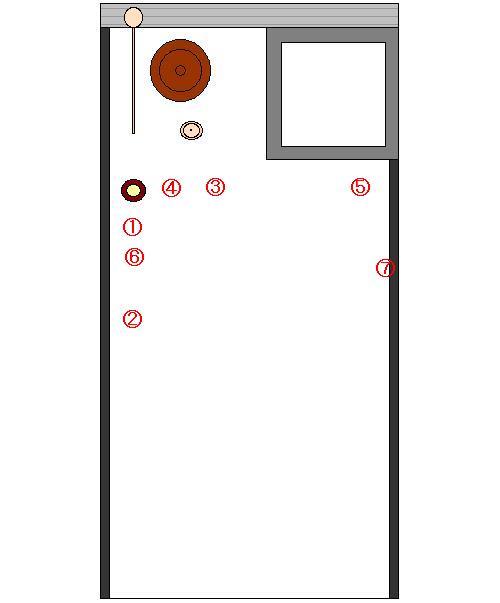
When the host enters the room, he carries in the chawan and koboshi. The chawan is placed below the chaire (so the chaire is tai, and the chawan is yō), ①, and the koboshi below that (so that now the chawan is tai and the koboshi is yō), ②. Then the chaire is moved so that it is associated with the kane to the right of the futaoki (now the futaoki is tai, and the chaire is yō), ③. Then the chawan is picked up and associated with the kane to the left of the futaoki, and so that the back edge of its foot is in line with the far side of the chaire (now both the futaoki and chaire are tai, while the chawan is yō), ④. Finally, the futaoki is placed on the right side of the mat, 2-sun away from the ro-buchi and resting on the right-most yin-kane (the arrangement of the kama in the ro guides the placement of the futaoki, so this suite of objects, together with the ro-buchi itself, are tai, while the futaoki is yō), ⑤, and then the hishaku is picked up, the position of the koboshi is adjusted, ⑥, and the hishaku is rested on the futaoki (with the end of its handle resting on the inner half of the heri), ⑦. This was the original way that tai and yō were used in chanoyu.
At a certain point, however, and probably because in the above example tai establishes a position, and yō is guided by it, tai and yō came to be associated with the yang and yin kane, respectively. The evidence suggests that this was first articulated by Imai Sōkyū (possibly as an erroneous misinterpretation of the passage in the Three Hundred Lines of Chanoyu -- Jōō appears to have been particularly parsimonious with his secrets, so while the interpretation of the Three Hundred Lines was taught to Uesugi Kenshin, the teachings that underpin this document were not shared with Sōkyū); and later passed on by him to his machi-shū followers (among whom were Shōan and Sōtan -- hence this way of using tai and yō, to mean yang and yin, during the early decades of the Edo period in the writings that have come down to us from the Sen family and their adherents).
==============================================
Shibayama explains the meaning of the poem in this way: “when [a yin-kane] is enclosed between two yang-kane, the yin-kane is converted [to yang]; but when [a yang-kane] is enclosed between two yin, they do not have this effect.
——————————————–———-————————————————
About this poem, Tanaka writes: when we speak of continuing, what does tsuzuki-kane [続きかね]* mean? This is explained in the Sumi-biki [墨引] volume. But to go into it briefly here, whether [we are serving] koicha or usucha, if we say that the three utensils -- the mizusashi, the chaire, and chawan -- are all associated with yang-kane, then the continuation [across yang-kane] is obvious. If, however, some of the things are placed on yin[-kane] and others on yang, the obvious connection between the utensils is lost, so this is when [the idea of] tsuzuki-kane [becomes necessary].
As an example, when the mizusashi is placed on the central yang[-kane], with the yin-kane on its left and right†, and the chaire and chawan are placed out [as part of the initial arrangement] on these [yin-]kane, [because] these yin- kane have no connection with the yang [the objects associated with them are yin]. We often see things like this in the everyday world.
Nevertheless, while it is not [usually] appropriate for the mizusashi to be yang, and the chaire and chawan to be yin, there is nothing wrong with making use of these kane at night -- because the proper way to do things at night is to make use of the yin-kane, so it is only natural that the chaire and chawan might be placed on yin-kane. But as for the kane during the daytime, some sort of device -- such as tying the kane together [for example, by using a mizusashi that is large enough to contact the kane on both sides] -- is necessary.
In the Sumi-biki book it says, the mitsu-gumi-awase arrangement‡ should be understood in this way. At night, [moving] the kane [over] by one step [so the mizusashi is resting on a yang-kane, and the chaire and chawan are resting on yin-kane] is appropriate. For this reason, Rikyū arranged the utensils in this way for night gatherings again and again. During the daytime, a small mage-mono mizusashi [the lid of which is 4-sun 9-bu in diameter, so it will fit between the kane], is only rarely arranged together with a small chawan and small chaire -- this monk has seen this done only two or three times [over the course of his lifetime]. This is an example of this kind of usage.
I have arrived at this understanding of the above poem only after many years of intensive research -- though it is possible that my own teacher, Nozaki Toen-ō [野崎兎園翁], misinterpreted this poem**. For this reason, after many years of research and discussion with the late Shibayama Junkō [Shibayama Fugen], the process came to fruition; yet some question why [Tanaka] Senshō went to such lengths? But within [the teachings of] kane-wari, this [idea of] tsuzuki-kane, and the next [topic of] kukuri-kane, we must allow, are among the small collection of Rikyū’s secrets. As proof of this is the special illustration that is found in the Sumi-biki book that implies that the illustrations found in most of the popular versions of the Nampō Roku are wrong. It seems that this may have been something that even Tachibana Jitsuzan was unable to grasp. __________ *Tsuzuki-kane [続きカネ] means successive kane. That is, the utensils are displayed on successive kane, without any break between them. Particularly when they are joined together (for example, by placing a ken-byō in front of them; or when arranging them together on a large tray), the implication is that they are part of the same set.
†That is, the mizusashi is centered on the central yang-kane, but, on account of its size, it does not touch the yin-kane on either side. The result is that while the mizusashi is yang, it does not change either of the yin-kane into yang; so, consequently, when the chaire and/or chawan are associated with either of the yin-kane (and are small enough that they do not also contact a yang-kane on either side of their yin), they remain yin.
‡Mitsu-gumi-awase [三つ組合わせ] means a set of three (utensils). This is referring to the case where the mizusashi, chawan, and chaire have all been arranged on the utensil mat together as the initial kazari when the guests enter the room for the goza. Though originally something that was done in the small room setting prior to the creation of the tsuri-dana (the purpose of which was to make it unnecessary for the host to turn back to the katte-guchi to lift in the utensils in successive waves), it appears that it also came to be acceptable to arrange the utensils in this way in the larger rooms during the Edo period (despite the original teaching that it was best for the host to make multiple trips back and forth between the katte and the temae-za in this setting).
In the Nampō Roku, the name for this sort of arrangement is usually shortened to mitsu-gumi [三ツ組].
**Nozaki Toen-ō [野崎兎園翁; 1836 ~ 1908] was a chajin and teacher of tea, who was affiliated with the Sekishū school. He was originally from Tosa, on the island of Shikoku. His Nampō Roku scholarship was widely influential during the Meiji period; and it was apparently in that capacity that Tanaka refers to him as his “former teacher.” Tanaka was, of course, initiated into chanoyu by teachers of the Urasenke lineage (and studied, for a time, with the Iemoto himself).
Muron, sen-shi Nozaki Toen-ō sae, kono uta no kaishaku wo ayamatte irareru [無論、先師野崎兎園翁さへ、この歌の解釈を誤って居られる] means, “of course my former teacher, Nozaki Toen-ō, may have been wrong about this poem” -- which would seem to imply certain lingering doubts over the accuracy of these interpretations of the poems (which, as he suggests, were based primarily on Nozaki sensei’s interpretations -- though Tanaka subsequently discussed Nozaki sensei’s teachings at length with Shibayama Fugen). The suffix -ō [-翁] that he appended to Nozaki sensei’s name is an affectionate honorific, which literally means “old man.”
==============================================
⁴Kuguri-kane dōgu ni yori wo shirazu-shite, ayamachi-suru ha karasu u no mane [クヽリカネ道具に依ヲ知ズシテ、過スルハカラス鵜ノ眞似].
Kukuri-kane [括りカネ] is sometimes referred to as kuguri-kane [潜りカネ]. Kukuri-kane means that the kane are tied together (by a larger object passing across them); kuguri-kane means that the kane are passed across. Ultimately, the idea is the same.

The left sketch shows a large tray that passes across several yang-kane. As a result, though the chaire is resting squarely on a yin-kane, it is yang because the tray is yang. Likewise in the right drawing, since the mizusashi also contacts both yang-kane, the chaire that is placed in front of it is likewise yang, even though it is resting on a yin-kane -- the chaire is yang because the mizusashi is yang.
Kukuri-kane dōgu ni yori wo shirazu-shite [くくりカネ道具に依ってを知らずして] means if one does not understand that the idea of kukuri-kane is connected with (the size of) the utensils....
Ayamachi-suru ha karasu u no mane [過ちするは鴉鵜の眞似]: ayamachi-suru [過ちする] means (if) one makes a mistake; karasu u no mane [鴉鵜の眞似] means (it is as if) a crow were (trying) to imitate a cormorant*.
A cormorant dives under water to catch fish. If a crow were to attempt to do the same, it would fail (and probably drown). Just so, if the host does not understand that kukuri-kane depends on the size of the utensil (whether it is something like a mizusashi, or a larger tray), if he places the chaire in front of the mizusashi, or rests it on the tray, so that the chaire is associated with the yin-kane in the center of that half-mat, if the mizusashi or tray is large enough to cross the yang kane on both sides, that is fine; but if the mizusashi or tray is too small, so that it does not touch the kane, then the mizusashi or tray will be yin, and the chaire will also be yin, which will probably be inappropriate (if the gathering is being held during the daytime); and so potentially constitutes a mistake. __________ *This appears to be a sort of proverb.
==============================================
Here Shibayama says “if the kane contacted on the left and right are yang, it is natural that the space in between becomes yang. But if the tray is so large that the [left and right] sides extend beyond the yang so that it [also] contacts the yin, when the number of yin [crossed] is ultimately greater than the number of yang [that are crossed], the strength of the yang is lost*.” __________ *Though several of the arrangements in Book Five appear to show some of the larger trays -- especially those employing the tsune-no-nagabon [常ノ長盆] and shaku-nagabon [尺長盆] -- crossing a larger number of yin-kane than yang. Which suggests that these poems were inserted into the Shū-un-an collection in order to disseminate machi-shū rules that were articulated by Imai Sōkyū, rather than teachings associated with the orthodox tradition. (It will be recalled that the yin-kane were not really considered in the gokushin arrangements, where only the yang-kane were used to define the orientation of the utensils.)
——————————————–———-————————————————
Tanaka writes, this kukuri-kane* was entirely Rikyū’s invention; and it is said that even Jōō was impressed by it. Kukuru means to extinguish the intervening yin-kane by connecting the two yang-kane on the left and right, across the one yin in the center, with a [larger] mizusashi or tray.
In the Sumi-biki book it says, “to summarize the ku-den [口伝], this means to view [kukuri-kane] as fundamentally being [a consequence of] the ratio of yin to yang†.” Also, under the image of the tarai-no-mizusashi [盥の水指], there is the notation, “even though this [central] kane is yin, it becomes yang because the mizusashi extends across the yang. This is why the hitotsu-mono [一ツ物] may be placed like this. This [arrangement] was Rikyū’s invention; and Jōō also said that he was very impressed by it” -- and this is what is meant [by kukuri-kane].
The poem says, “if you don't understand what ‘according to the utensils’ means, you can easily fall into the mistake of ‘a crow [trying to] imitate a cormorant.’” But what does ‘depending on the utensils’ [actually] mean? Below the subsequent drawing of a kukuri-bon [括り盆] it says, “if the mizusashi is small [in size], there is also the case where the chaire may also be placed as a yin hitotsu-mono here.
“In general, on occasions when a mukō-ro or furo is [being used], and when there is no mizusashi, [the chaire] is placed as an hitotsu-mono resting on a small tray‡ -- though there are also people who place the chaire by itself [without a tray]. But if the chaire itself is also small, then a large tray** should be used. When the tray crosses [several yang-kane], it follows the same idea as [when] a mizusashi [also does so]††.
“If [the host uses] a small tray, or when the chaire is placed out by itself [without a tray], this is done when it is necessary for [the chaire] to be a placed as a yin hitotsu-mono” in that kind of situation. At night, or on inauspicious occasions [such as when a chakai is given to commemorate a death], aside from the chaire’s being placed as a yin or yang hitotsu-mono, a mizusashi or large tray should certainly not be used to join [the kane] together‡‡. Even so, in order to avoid a situation where [the host] inadvertently uses a tray on which to rest the chaire that will create that effect, there are people who [prefer to] display the chaire by itself [without a tray] as yin more often than not. I don’t know if this is an example of depending on the utensils to not bind the kane together, or of chajin who are crows that are acting like cormorants -- this poem made me chuckle! __________ *Kukuri-kane [括りカネ] refers to the case where a larger object -- such as a mizusashi or tray -- crosses two yang-kane. The object, and anything associated with it, is thus yang (despite the fact that a yin-kane is sandwiched between the two yang-kane).
This use of kukuru [括る] would best be understood as binding two (yang) kane together (by using an object that is large enough to cross them both).
†In other words, which ever preponderates -- yin-kane or yang -- is the one that determines whether the mizusashi or tray (and so everything associated with it) is yin or yang.
This assertion, however, appears to contradict the classical teaching, whereby any contact with a yang-kane is sufficient to render the mizusashi or tray yang. (Again, in the oldest stratum, only yang-kane were taken into consideration; this reliance on the yin-kane appears to have been introduced by Imai Sōkyū.)
‡A small tray (chisai-bon [小さい盆], or ko-bon [小盆]) is a tray that is (at least according to the oriignal theory) exactly 2-sun larger than the chaire on all four sides. This kind of tray was used by Rikyū precisely because it allows the chawan to be placed beside the bon-chaire as if no tray were present at all.
When these details were forgotten, however, the small tray became a generic object (around 6-sun across). Since Rikyū’s usage was also forgotten along with the way the size of the tray was supposed to be calculated, the Sen family performed bon-date with a small chaire-bon as if a larger chaire-bon was being used. (This large chaire-bon, and its associated temae, were based on the bon-date from Jōō’s middle period.) This is just one example of how the machi-shū tradition (which followed the teachings of Imai Sōkyū) came to supplant Rikyū’s own chanoyu in the teachings proselytized by the Sen family.
**Presumably this means a tray based on Jōō’s way of calculating its size (where the tray was 3-sun larger than the chaire on all four sides). Trays of this sort are commonly used as higashi-bon today (though most of the antique examples from the sixteenth century were originally selected for use as chaire-bon).
††In other words, when the mizusashi is large enough that it contacts two yang-kane, it morphs the intervening yin-kane into yang. So, too, when the chaire-bon rests across two yang-kane, the tray (and anything arranged on it) becomes yang (and any yin-kane are ignored).
‡‡Since kukuri-kane (whether achieved by a large mizusashi crossing the kane, or a kuguri-bon) would convert the yin chaire that is associated with it into yang, the process of kukuri-kane must be avoided on yin occasions -- since, on such occasions, it is important for the chaire to be yin.
==============================================
◎ If these translations are valuable to you, please consider donating to support this work. Donations from the readers are the only source of income for the translator. Please use the following link:
https://PayPal.Me/chanoyutowa
0 notes
Text
I think God shot down my attempts at relinquishing my tsuzukazu oshi title haver so here's take two, I'll delete this if I find out my original post got sent to the void a while ago
So yeah, Hisoka replaced Kazu as my second favorite character in the game

Fakest tsuzukazu enjoyer, I know
Tsuzuru is still my dear sweet god from the machine, obviously. I will never be able to take back the feelings that fell when he finished the script for R&J
Hisoka was like a drop of poison falling into my drink everyday until I became immune to him. I always loved reading his focus events, and watching new cards of him get revealed always had me throwing my phone at pillows. I think what fully broke me was Esute Spring Act 2 because




I was never expected to recover from that one, tbh
So that's the backstory on why I spent all my dias on the aki/fuyu ani scout instead of anywhere sensible

Mankai March question 2!
I hope everyone had fun yesterday! Today’s question is pretty simple as well: Who is your oshi? How did they become your oshi? Let’s hear some stories about how you came to love them, or maybe love at first sight!
127 notes
·
View notes
Text
[綴一 || TsuzuKazu] Lovin MV
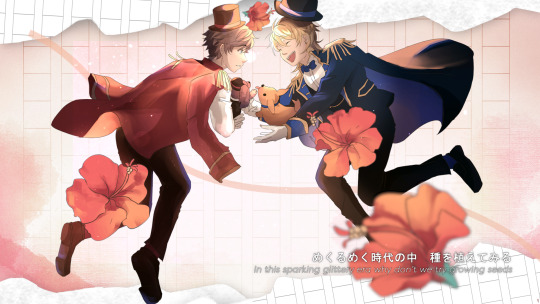
[FULL VIDEO LINK HERE]
A love letter to TsuzuKazu
A fated encounter
Also, happy birthday Tsuzuru! Mankai's beloved playwright
✧─── ・ 。゚★: .✦ . :★. ───✧
More MV illustrations below! :>
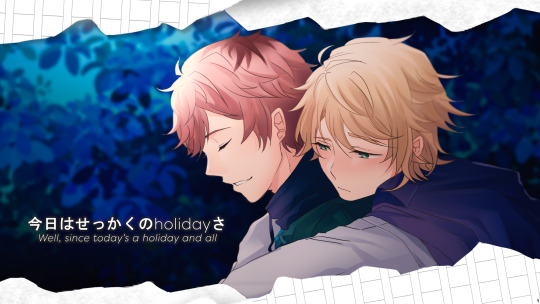
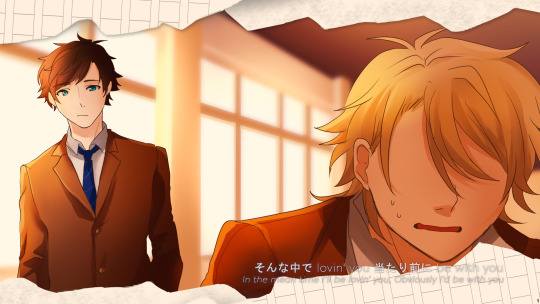
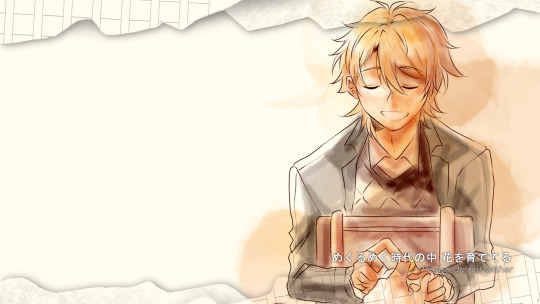
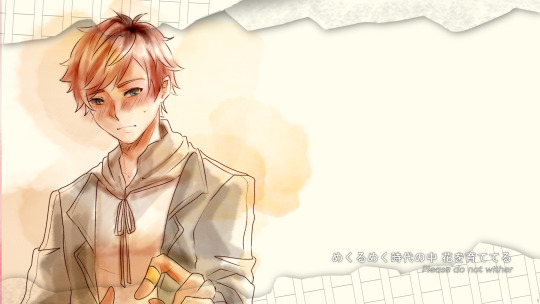
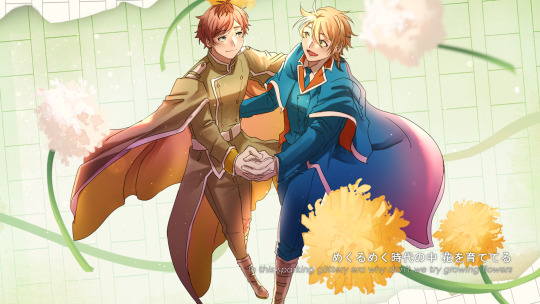
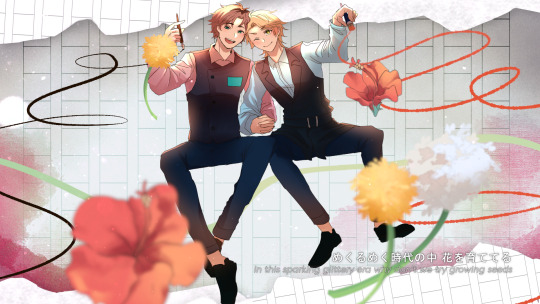

#a3! act! addict! actors!#a3!#a3! tsuzuru#a3! kazunari#kazunari miyoshi#tsuzuru minagi#tsuzukazu#tzkz#my art#harleysart#mobage#lovin#mrs green apple#fanmade mv
87 notes
·
View notes
Photo

happy holidays, everyone
#a3!#act! addict! actors!#tsuzuru minagi#kazunari miyoshi#tsuzukazu#tsuzuru dies of hypothermia live on instablam
134 notes
·
View notes
Text
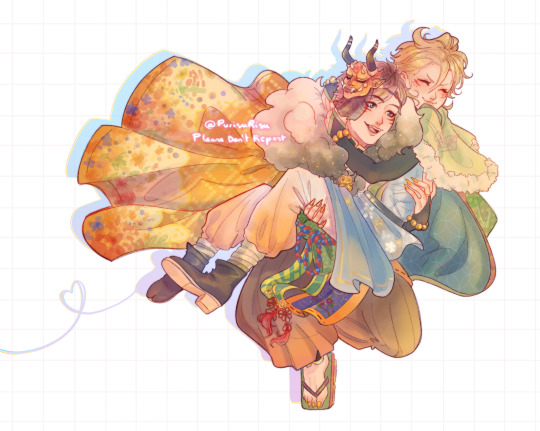


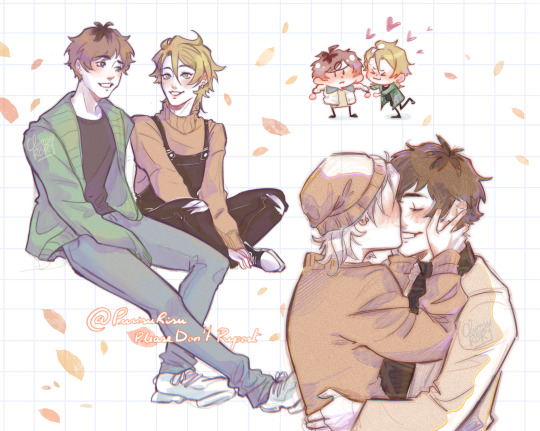
They are my everything and I miss drawing them...
#a3! game#act addict actors#a3!#a3 fanart#エースリー#a3! tsuzuru#a3! kazunari#tsuzuru minagi#kazunari miyoshi#tsuzukazu#fanart#my art
134 notes
·
View notes